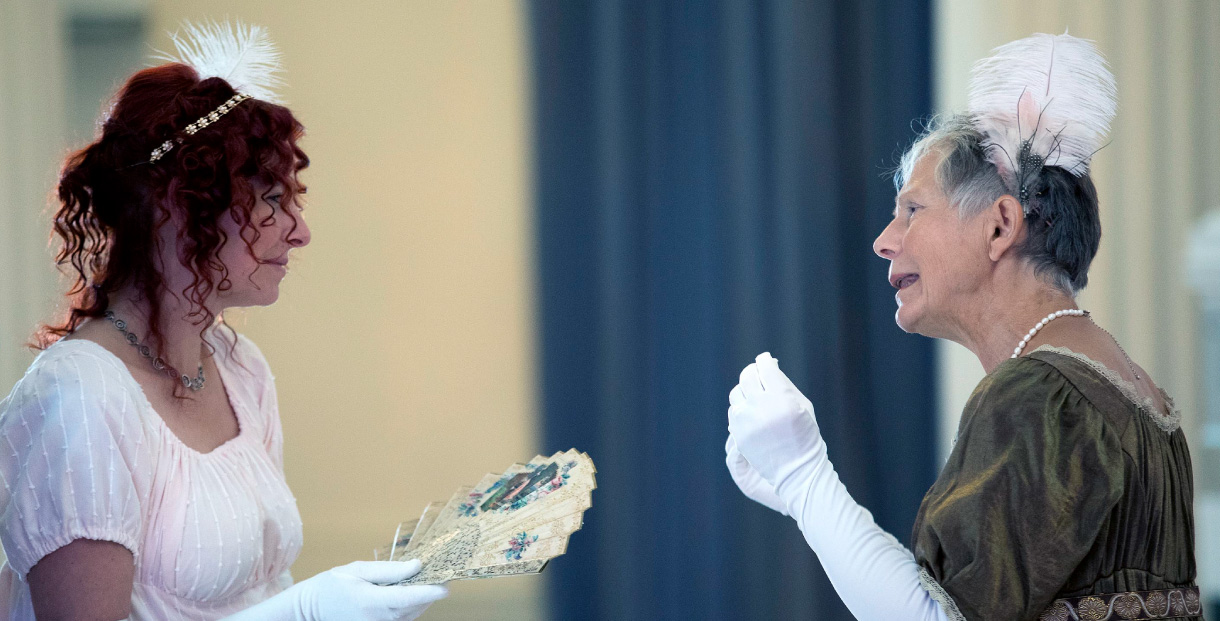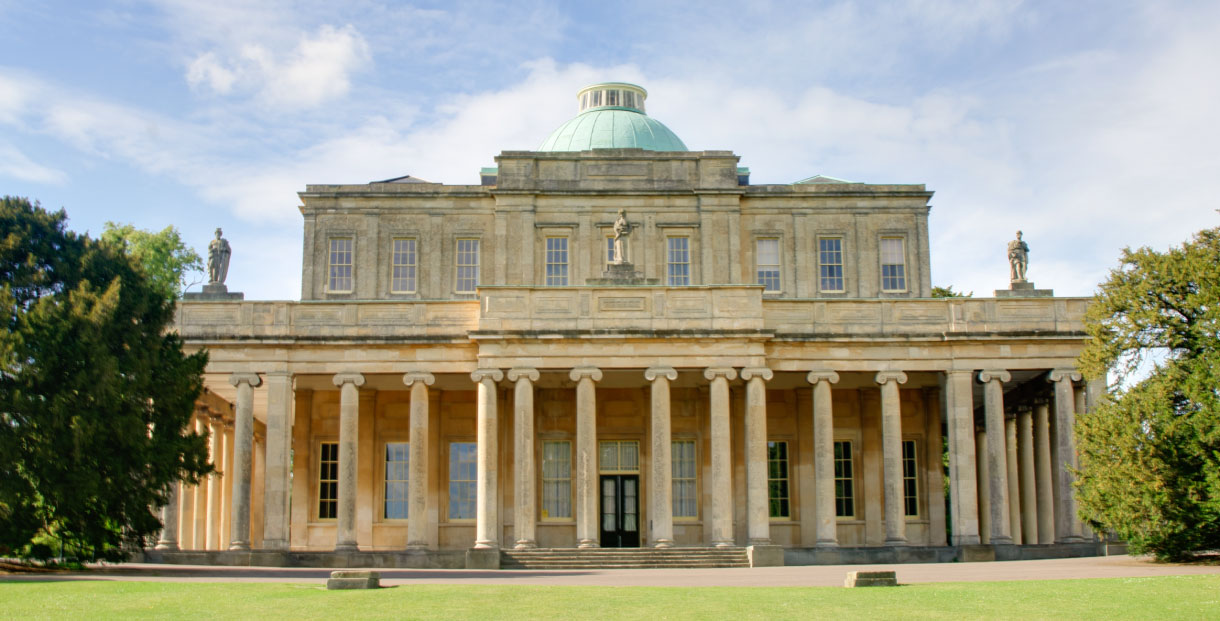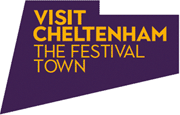
As part of the exploration of periods of British history, through the towns that flourished, Historian Alice Roberts came to Cheltenham to identify and understand the Regency Period, for her Channel 4 documentary series Britain’s Most Historic Towns. Cheltenham, which holds the title for ‘most complete Regency Town’ offered a unique and unrivalled insight into the era, thanks to its position as the Party Capital of Britain all those years ago. We may no longer alight in Sedan chairs, luxuriate in warm spring spa waters or Promenade to see and be seen, but Cheltenham is still home to some phenomenal architectural clues to the life and times of Regency England.
In the opening credits of the programme (which can be watched on All4 until 4th June) you can see Alice enjoying a Regency ball, and highlighting the Regency period’s unique blend of social and economic change. It considers the fact that Cheltenham’s position as the ‘best place to raise a family’ (2015) and our culture of ‘elegance, pleasure and a strong sporting culture’ is thanks in large part to the Regency era.
.jpg)
Strictly between 1811 and 1820, the Regency Period denotes the point in history when Prince George reigned in lieu of an ailing King and father, George III; however in reality the term ‘Regency Period’ is often used to encompass the first few decades of the nineteenth century. During this era, Jane Austen published her literary masterpiece Pride and Prejudice, meanwhile Britain was fighting wars on two fronts – the Napoleon wars in France, and wars over territory in the early American Settlements. It saw largely the first major expansion of the middle classes - people with time and money to spend – giving rise in particular to spa towns for the pursuit of pleasure.
During the Regency Period, Alice reports that almost 100 ‘spa towns’ popped up across the country, the majority claiming the unmatched healing powers of the natural spring waters, but what set Cheltenham apart, aside from its healing waters, was the rapid expansion of things to do for the ‘well to do’ set, and its place as a Town in which to see and be seen; its fate further sealed by a visit from King George III. For those who were wealthy, a stay in a spa town for the ‘season’ (June to October) was a must, and Cheltenham was at the heart of this, with the still-standing and magnificent Pittville Pump Rooms playing host to a plethora of balls and parties. Our draw saw Jane Austen, Byron and even the Duke of Wellington visit the Town, with a lustrous lure of both balls, concerts and events, alongside the less refined and more raw experience of betting on activities such as a man eating 80 pies… apparently. In fact, the programme goes on to highlight that the Duke of Wellington visited annually, and during his fortnight stay was a regular visitor to the bath house on Old Bath Road, which was formerly called the Montpellier Baths and is now the Cheltenham Playhouse Theatre. Interestingly, the Playhouse is still home to many of the original baths; tiled rooms hidden beneath the stage and seating, and many now used for storage.
Our spa water, which can still be taken in Pittville Pump Rooms (for those with a strong stomach), was believed to have cured many ills, and the dirtier and smellier the water, the more people believed it did them some good. Cheltenham’s drink was reported to cure everything, from gout to rheumatism, constipation and even heart problems. Sadly, it looks like they don’t have any actual healing properties, but that didn’t stop people flocking! Pittville Park is of course attached to the very beautiful and extensive Pittville Park, which at the time was for the exclusive use of the visiting gentry.

Interestingly, just 40 years before Pittville Pump Room was built, Cheltenham was a small collection of buildings and a quiet market Town, while much of the land was untouched countryside and uninterrupted views. While other spa towns sprung up, Cheltenham was completely unknown, but that was all about to change. An unsuspecting flock of pigeons drew attention to the somewhat salty natural water spring, something that was about to change the course of Cheltenham’s history. It is why the Cheltenham coat of arms includes pigeons, and why all around the town you will see cast iron signposts with model pigeons alighting the top, or carvings on many of our buildings. You can read more about the discovery of the spa waters here…
Interestingly, the site of the original spring that made Cheltenham famous was far outside the historic market town in the middle of farmland. In fact, the original well – discovered and installed by William Mason – is at the very centre of Cheltenham’s modern sprawl, underneath what is now Cheltenham Ladies College, but back then, it was largely inaccessible via a muddy dirt track. Much of our knowledge of William Mason – and more importantly his son-in-law Henry Skillicorne who ultimately built the reputation of the spa – comes from a very long inscription on stone which can be seen today in St Mary’s Minster – Cheltenham’s oldest building. The inscription, which is a whopping 595 words, is believed to be the longest memorial script for anyone in the UK, ever! The installation of ‘Well Walk’ by Henry Skillicorne, proceeding more than half a mile from the town centre to the spa, was the catalyst that started Cheltenham’s life as a holiday destination. Its gravel path, elm tree avenue and bridge over the River Chelt created a refined walk to the spa, increasing its popularity. Although it has since been demolished, there is a small section of well walk between shops in the town, and we can highly recommend the Enchanted Tea Room here which does a fantastic afternoon tea.
As part of the programme, Alice Roberts takes a dip in the Sandford Parks Lido, which despite being built a century after the Regency Period, in the 1930’s, sums up what Regency Cheltenham was all about - Health, recreation and water. Indeed the Town’s motto is Salubritas et Eruditio, meaning "Health and Education". Theatre was also a big part of the entertainment culture, however sadly the town’s Regency theatre burned down and so Alice visits The Everyman Theatre which was designed by Frank Matcham and is an astounding building in its own right. Here she learns some of the history of theatre at the time from play bills, and also learns the origin of the phrase ‘slapstick comedy’.
.jpg)
One final stop on her grand tour of Cheltenham is the delightfully bijoux Montpellier Arcade, a dinky little glass-covered street lined with shops. At the time, the Montpellier Arcade was one of the first purpose-built shopping arcades in the country, taking advantage of the new fashion of shopping, and contained sixteen different resellers in the tiny location. Today, it is home to bar and coffee shop seating, and if you look up, you will see the original glass ceiling, still intact.
The programme offers a fascinating insight into life in the Town during the Regency period, and even as locals, we learned a lot! Anyone interested in watching the programme can find it on All4 until 4th June. Anyone interested in visiting Cheltenham, we have more on our Regency History here, details of accommodation – much of which is housed in original Regency properties – and of course, an extensive list of things to do and what’s on. What are you waiting for?
Related
Comments
Nobody has commented on this post yet, why not send us your thoughts and be the first?



 to add an item to your itinerary basket.
to add an item to your itinerary basket.



.png)











